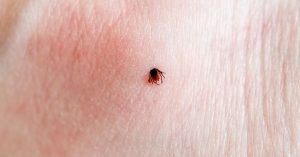
Someof my patients recovering from Lyme disease describe a familiar pattern: they finally feel well enough to be active—maybe a short walk, a trip to the grocery store, an hour of work—then crash. The next day, fatigue deepens, pain flares, and concentration fades.
This isn’t ordinary tiredness. It’s post-exertional malaise in Lyme disease (PEM)—a delayed worsening of symptoms after even modest physical, mental, or emotional effort. In Lyme disease, PEM can quietly derail recovery unless it’s recognized and managed.
What the Research Shows
Although post-exertional malaise (PEM) was first described in chronic fatigue syndrome (ME/CFS), similar patterns are increasingly recognized in Lyme disease. Many patients with post-treatment Lyme disease syndrome (PTLDS) report the same hallmark triad—fatigue, post-exertional crashes, and unrefreshing sleep.
A 2023 systematic review confirmed that these symptoms are among the most common and persistent features following Lyme infection Bai et al. 1993. Even the CDC acknowledges that “fatigue and post-exertional malaise” can occur as part of Lyme’s lingering effects, underscoring how this condition overlaps with other post-infectious syndromes like long COVID.
What Post-Exertional Malaise in Lyme Disease Feels Like
For most patients, post-exertional malaise doesn’t strike right away. During activity, they often feel capable—sometimes even optimistic that they’re improving. Then, 12 to 48 hours later, the symptoms begin to build.
Fatigue deepens. Muscles ache. Thinking slows. Even simple tasks—reading, showering, holding a conversation—can feel overwhelming.
The crash may last for days, sometimes weeks, after what seemed like a normal level of exertion.
Many describe it as if their battery drains faster than it recharges—a sense that energy spent today steals from tomorrow.
As one patient told me, “It’s like borrowing energy from the future—and paying it back with interest.”
Pacing: The Science of Sustainable Recovery
The best approach to PEM isn’t rest or overexertion—it’s pacing. Pacing balances activity and recovery to stabilize energy and inflammation.
How to pace effectively:
- Identify limits. Track which activities trigger delayed flares.
- Plan and pause. Break tasks into smaller pieces; rest before fatigue sets in.
- Alternate exertion types. Separate physical from cognitive activity.
- Respect early signs. Eye pressure, dizziness, or brain fog may signal a crash.
Pacing doesn’t mean quitting—it means giving your nervous and immune systems room to recalibrate. With careful pacing, many patients gradually expand their activity over time, as discussed in our post on Lyme disease recovery.
Living With Limited Energy: The Spoon Theory
Many patients with Lyme disease use the “Spoon Theory” to describe life with limited energy.
Imagine waking up each day with a handful of spoons—each representing the energy needed for basic tasks.
Taking a shower costs one spoon. Making breakfast, another. A phone call, maybe two.
Once the spoons are gone, there’s no reserve—borrowing from tomorrow means crashing later.
This metaphor captures the careful energy budgeting required when living with post-exertional malaise.
It also reminds caregivers and clinicians that pacing isn’t about avoidance—it’s about survival.
Why PEM Is Often Misunderstood
Traditional rehab models assume fatigue stems from deconditioning. But in Lyme and other PEM-related illnesses, pushing harder worsens inflammation and dysautonomia. Recovery requires symptom-titrated movement, restorative sleep, nutrition, and nervous-system retraining.
In short, pacing replaces “no pain, no gain” with “no crash, steady gain.”
The Emotional Toll
PEM can make patients doubt themselves—or feel doubted by others. Friends may urge, “Just be more active,” unaware that exertion itself prolongs illness. Recognizing post-exertional malaise in Lyme disease validates experience and reframes recovery as biologic, not behavioral.
Have You Experienced PEM After Lyme?
💬 Have you experienced post-exertional malaise in Lyme disease? What activities trigger your crashes, and what pacing strategies have helped? Share your story below—your insight may help others recognize and manage this overlooked symptom.
Additional Resources
- Pubmed – Posttreatment Lyme disease syndrome and myalgic encephalomyelitis/chronic fatigue syndrome: A systematic review and comparison of pathogenesis
- CDC – Manage Myalgic Encephalomyelitis/Chronic Fatigue Syndrome
- Lyme science blog – What does Lyme disease Fatigue feel like?
- Lyme science blog – 30 Hidden Lyme Disease Symptoms


